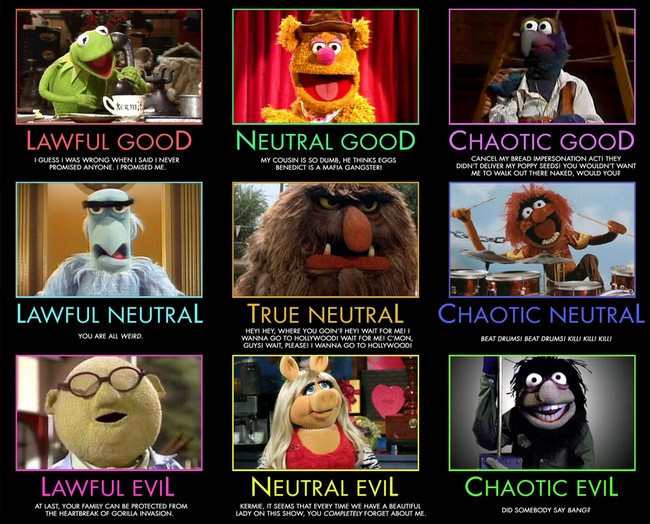I think alignment in D&D isn’t explained very well in the players hand book. As a result the mechanic has received a fair amount of criticism from a lot of different players, DMs and groups. So I wanted to try and help expand on the idea of what alignment in D&D can be. As a system, 5e has become very fluid and I think that’s a good thing. As more people play the game it gets improved because of the diversity of the people playing it. That being said, Alignment has been increasingly cast away from a lot of games because 5e does kind of a poor job of trying to explain what it is, and what it represents.
So, it was with that idea in mind that I made this video. I applied some mechanics from the 3rd edition of another RPG, Vampire: The Masquerade and a few ideas from Psychologist Carl Jung to help flesh out an idea of what I think alignment in 5e could be.
Weather that misunderstanding comes from a poor explanation or from players wanting to branch their characters away from a particular moral trope, alignment needs some help. In order to do that I drew some inspiration from my 3rd edition Vampire the masquerade handbook and from old reliable Carl Jung.
Jung and the creators of vampire seem to have commonalities because they both describe part of the human personality as public and private. To Jung the public part of a person's personality is called the persona. It represents the mask that we wear in our jobs and when we are dealing with other people. This mask serves two purposes according to Jung. Firstly it is meant to represent the social, moral and ethical rules that we agree to and try to show to the people around us. The second purpose is to help repress some of the more instinctual parts of our personality. The parts of our personalities that want to shout at the person who cuts in front of us in line or stops us from stealing money out of a wallet we find on the street. The persona is meant to keep those base instincts in check. In Freudian language this may be a combination of the ego and the super ego.
Vampire: the Masquerade uses a similar principle called demeanor. This is a character trait that is chosen during character creation and represents the public facing part of your character. And similarly to Jung's idea the demeanor of a character is meant to cover up the private part of your character's personality. In Vampire that private personality is called the nature. In Jung's model the concept of nature would be referred to as the shadow.
The role of the shadow is to account for all the instinctual, aggressive, sexualized, unrestrained parts of our personality that we believe to be in conflict with the social norms that our persona, or demeanor, represent. Jung didn't believe the shadow was evil, just that it was suppressed by the persona, or demeanor. A person needed to be aware of both parts of the personality and a allow for the equitable function of both halves.
In D&D, the alignment chart is similarly split into two sections. The lawful, neutral, chaotic part of the chart and the Good, neutral, evil part. By combining the two sections players can choose between the nine standard types of alignment that D&D has become somewhat memeworthy for.

With all of that in mind, if we break the two sections of alignment apart into Jung and Vampire's concepts of public and private we are able to imagine a more in depth idea of who our characters truly are.
If a character is lawful, their internal nature, or shadow, of good neutral or evil helps to direct their unseen impulses but their public actions still follow the ethical guidelines, or persona, of their lawful, neutral or chaotic part of their personality.
Essentially, a lawful good character and a lawful evil character may act similarly but they are motivated very differently. If a player can utilize this idea and their DM is agreeable to it, I believe they can have a more developed sense of personality for their characters.
If you've got questions about this or if you think I missed the mark, please feel free to comment here or on any of my other social media accounts.
Twitter & Instagram @Tabletoptheory1
